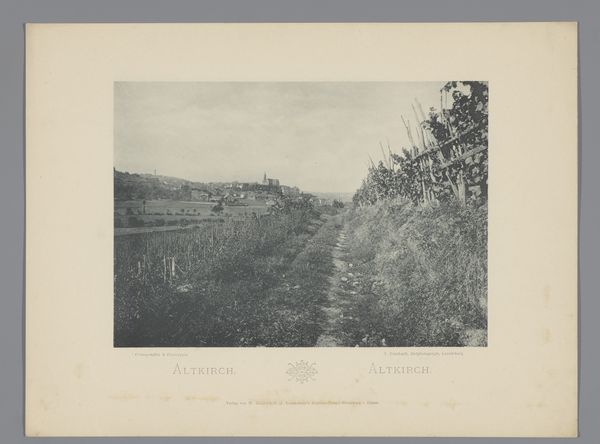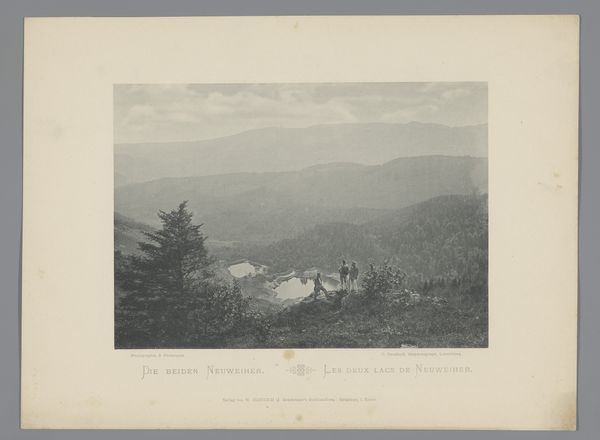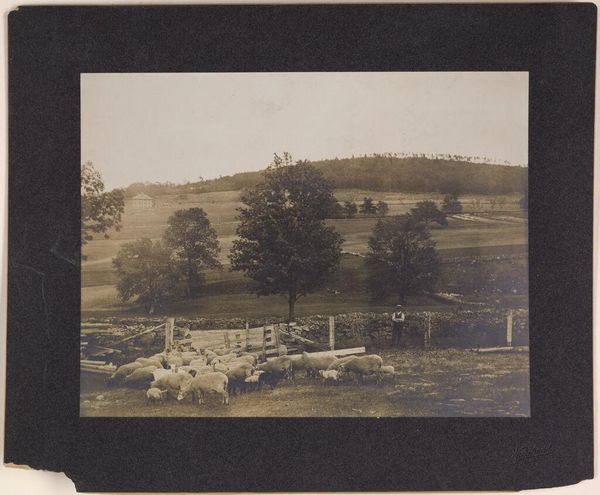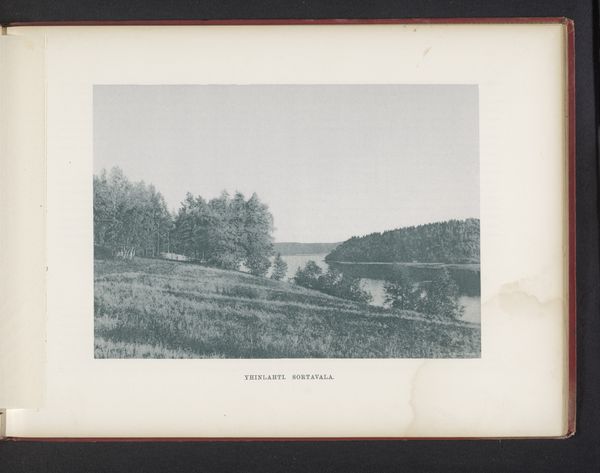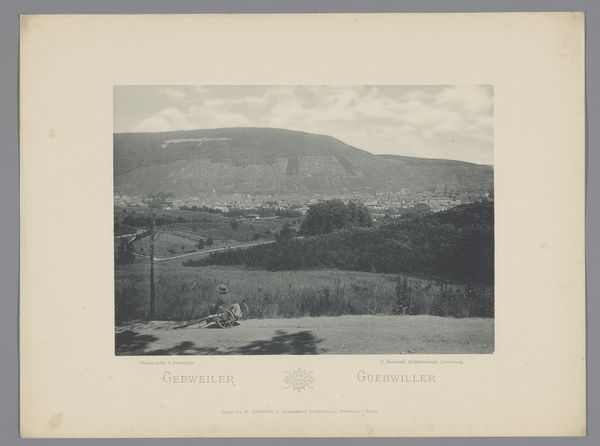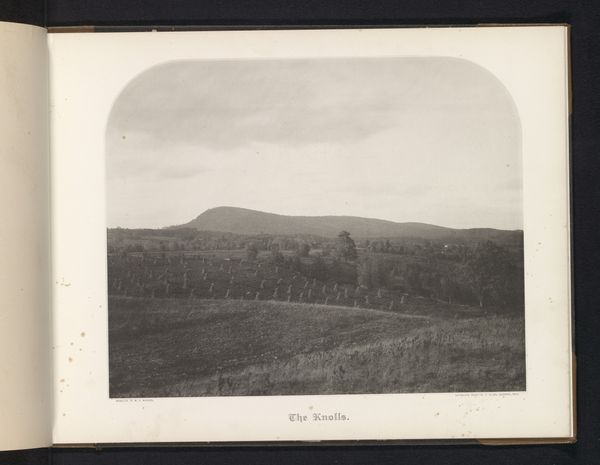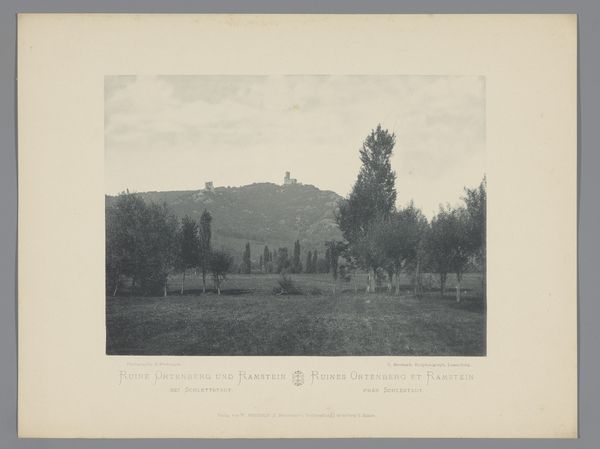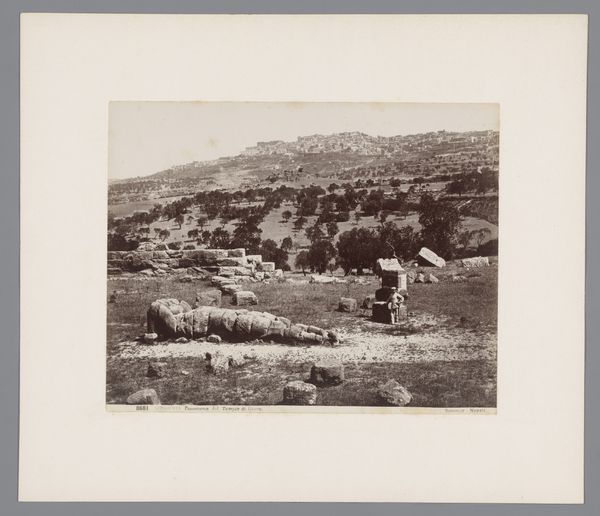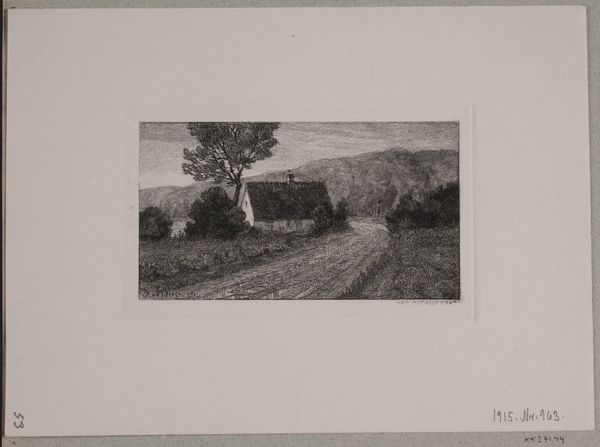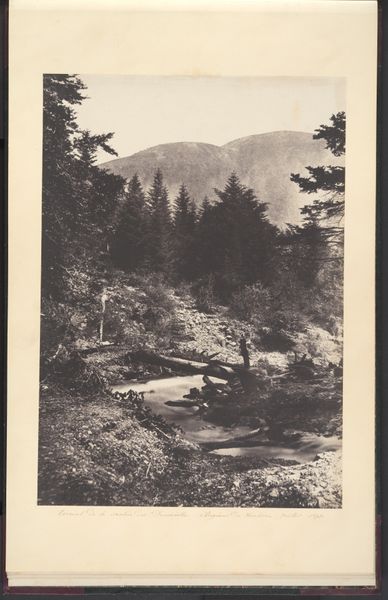
photography, gelatin-silver-print
#
pictorialism
#
landscape
#
photography
#
mountain
#
gelatin-silver-print
#
realism
Dimensions: height 215 mm, width 268 mm
Copyright: Rijks Museum: Open Domain
Editor: So, here we have M.P. Warner’s “Mount Holyoke,” a gelatin-silver print made sometime between 1883 and 1888. It's quite a serene landscape, very tonal. What strikes you about this piece? Curator: The labor involved in creating this seemingly simple photograph is significant. Think about it: the collodion process to produce the gelatin-silver print demanded considerable skill and physical work, from preparing the chemicals to coating the plates. The whole act of physically making the work becomes the subject of it, to me. Editor: I hadn't considered that level of involvement. How does the choice of materials influence our understanding of the subject matter? Curator: Gelatin-silver prints, while capable of capturing detail, often lack the sharp precision of later photographic processes. That softness imparts a specific mood but also hints at the economic accessibility – or lack thereof – of photographic technology at the time. This process connects to the class dynamics and the consumer market for landscape imagery. What social strata had access to such technology? What ideologies did those materials transmit? Editor: That makes me rethink the composition entirely. I see how the print itself isn’t just a record, but a product shaped by industrial and economic realities. Curator: Precisely! The labor is embedded within the aesthetic experience itself. We, as viewers, must understand it to grasp this image fully. Consider the transportation needed to photograph on location, the studio involved, and what all of that signifies beyond a pastoral landscape. Editor: I see this piece differently now. The layers of production, material accessibility and labour involved give it a much more profound depth. Curator: Yes, shifting focus from the subject alone, to the means of its production. It's like revealing a hidden dimension to the art.
Comments
No comments
Be the first to comment and join the conversation on the ultimate creative platform.
